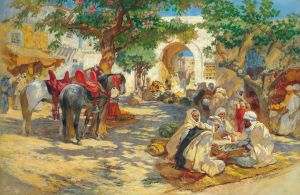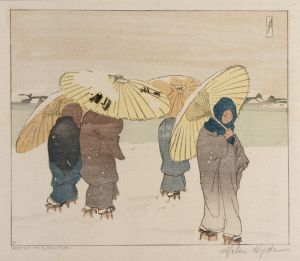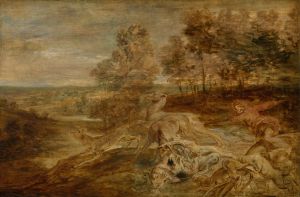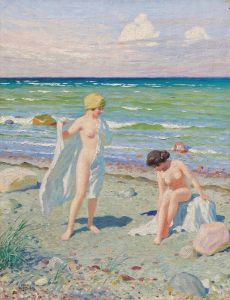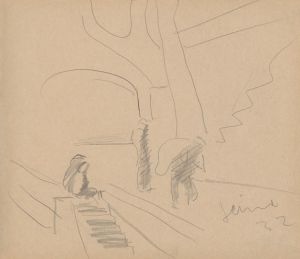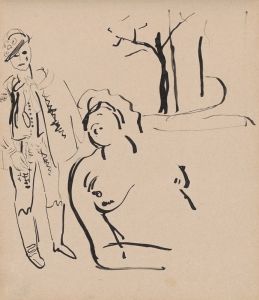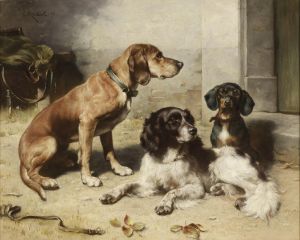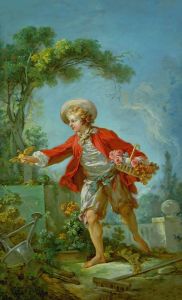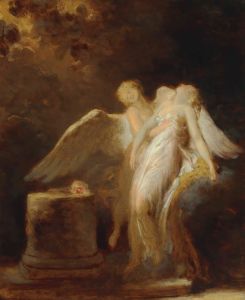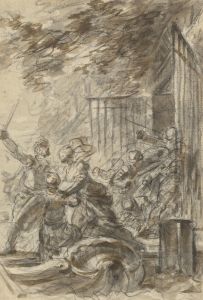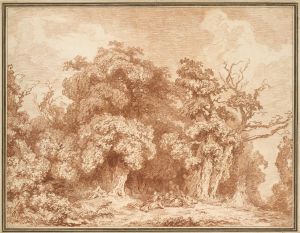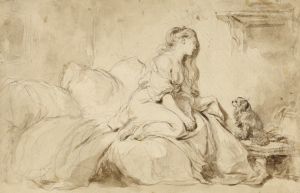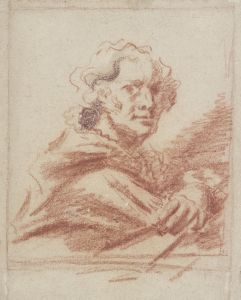
Blindman’s Buff
A hand-painted replica of Jean-Honoré Fragonard’s masterpiece Blindman’s Buff, meticulously crafted by professional artists to capture the true essence of the original. Each piece is created with museum-quality canvas and rare mineral pigments, carefully painted by experienced artists with delicate brushstrokes and rich, layered colors to perfectly recreate the texture of the original artwork. Unlike machine-printed reproductions, this hand-painted version brings the painting to life, infused with the artist’s emotions and skill in every stroke. Whether for personal collection or home decoration, it instantly elevates the artistic atmosphere of any space.
Jean-Honoré Fragonard's painting "Blindman's Buff" is a quintessential example of the Rococo style, characterized by its playful themes, light-heartedness, and intricate details. Fragonard, a prominent French painter of the 18th century, was known for his exuberant and often romantic depictions of contemporary life, and "Blindman's Buff" is no exception.
Created around 1775-1780, "Blindman's Buff" captures a scene of leisure and amusement, reflecting the social and cultural milieu of the time. The painting depicts a group of elegantly dressed individuals engaged in the game of blindman's buff, a popular pastime in which a blindfolded player attempts to catch others. This game was often associated with themes of love and flirtation, fitting well within the Rococo's focus on romance and playful interaction.
The composition of "Blindman's Buff" is dynamic and lively, with figures arranged in a circular motion that guides the viewer's eye around the canvas. Fragonard's use of soft, pastel colors and delicate brushwork enhances the sense of movement and joy. The figures are depicted with a sense of grace and fluidity, their expressions and gestures conveying a sense of merriment and spontaneity.
Fragonard's attention to detail is evident in the elaborate costumes and the lush, verdant setting, which adds to the painting's overall sense of opulence and whimsy. The setting is typically Rococo, with an emphasis on nature as a backdrop for human activity, often symbolizing the harmony between humanity and the natural world.
"Blindman's Buff" reflects the broader cultural trends of the Rococo period, which was marked by a shift away from the grandeur and formality of the Baroque towards a more intimate and decorative aesthetic. This period in art history coincided with the reign of Louis XV and the early years of Louis XVI, a time when the French aristocracy indulged in the pleasures of life, often depicted in the art of the era.
Fragonard was a master at capturing these fleeting moments of pleasure and intimacy, and "Blindman's Buff" is a testament to his skill in rendering the subtleties of human interaction. The painting is not only a visual delight but also a reflection of the societal values and interests of 18th-century France.
Today, "Blindman's Buff" is appreciated for its artistic merit and its ability to encapsulate the spirit of the Rococo period. It serves as an example of Fragonard's ability to blend narrative and aesthetic beauty, making it a cherished piece in the history of art. The painting is housed in the Toledo Museum of Art, where it continues to be admired by visitors and art enthusiasts alike.





